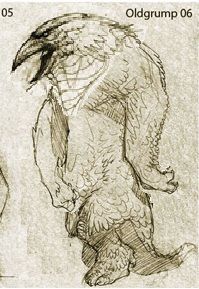Ecology: Owlbears have a lifespan of 20 years. They are warm-blooded mammals, but lay eggs. They prey on anything, from rabbits to bears, to trolls, to snakes and reptiles. Owlbears prefer temperate climates, but some thrive in subarctic environments. As a hybrid of two animals, one diurnal and the other nocturnal, they have an unusual active time, waking at noon, hunting animals active during the day, then hunting nocturnal creatures before going to sleep at midnight. Owlbears are active in the summer months and hibernate during the cold season. There are rumors of white arctic owlbears, a cross between arctic owls and polar bears, but no specimens have ever been captured.









